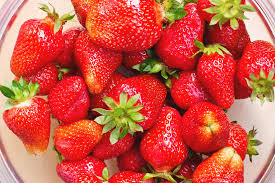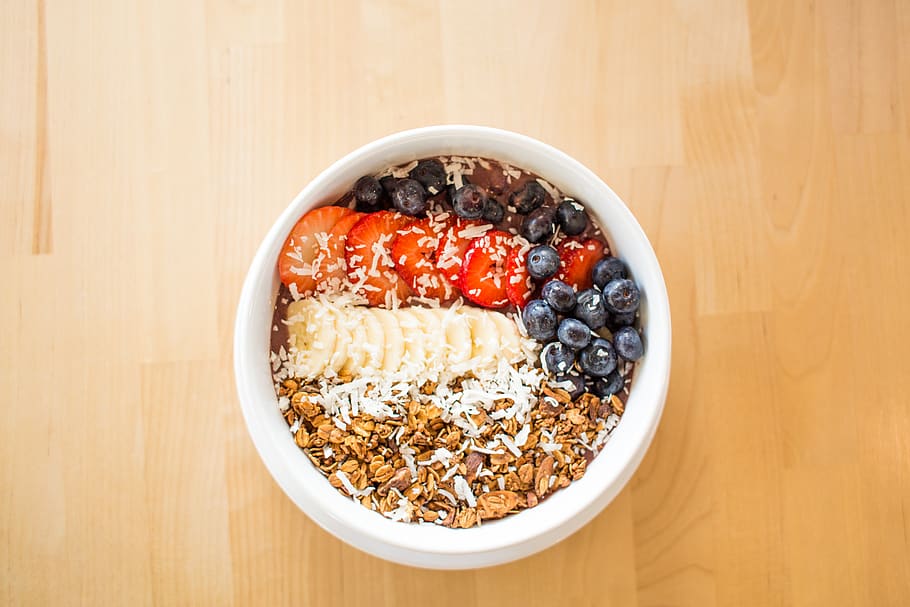Mixed Berry Acai Bowl
Ingredients
Strawberries, Raspberries, Blueberries, Blackberries, Unsweetened Almond Milk, Honey, Acai berry puree packet,
Toppings
Banana, Cacao Nibs, Strawberries, and Unsweetened Coconut

What are Strawberries?
There are different types of strawberries. What we get when we shop in the supermarket is the Garden Strawberry also known as Fragaria Ananassa. This is a group of hybrid species of Fragaria. The fruit is widely appreciated for its characteristic aroma, bright red colour, juicy texture, and sweetness. The fruits are rich in vitamin C and are commonly eaten fresh as a dessert fruit, are used as a pastry or pie filling, and maybe preserved in many ways. The strawberry is not, from a botanical point of view, a berry. Technically, it is an accessory fruit, meaning that the fleshy part is derived not from the plant’s ovaries but from the receptacle (vegetative tissues near the end of reproductive stems) that holds the ovaries. Each apparent “seed” on the outside of the fruit is actually one of the ovaries of the flower, with a seed inside it.
History of Strawberries
The very first garden strawberry was grown in Brittany, France, during the late 18th century. The strawberry fruit was mentioned in ancient Roman literature in reference to its medicinal use. The French began taking the strawberry from the forest to their gardens for harvest in the 14th century. By the 16th century, references to cultivation of the strawberry became more common. People began using it for its supposed medicinal properties and botanists began naming the different species. In England, the demand for regular strawberry farming had increased by the mid-16th century. The new species gradually spread through the continent and did not become completely appreciated until the end of the 18th century. When a French excursion journeyed to Chile in 1712, it introduced the North American strawberry plant with female flowers that resulted in the common strawberry that we have today. Over the last two decades, the U.S. strawberry industry has experienced an upward trend in per person consumption. This is due to multiple reasons: consumers have more awareness of the importance of eating a healthy diet; yield improvements have created an expanded domestic supply, and imports allow for year-round availability.
The Benefit of Strawberries
Blood sugar regulation
When carbs are digested, your body breaks them down into simple sugars and releases them into your bloodstream. Your body then starts secreting insulin, which tells your cells to pick up the sugar from your bloodstream and use it for fuel or storage. Imbalances in blood sugar regulation and high-sugar diets are associated with an increased risk of obesity, type 2 diabetes, and heart disease. Strawberries seem to slow down glucose digestion and reduce spikes in both glucose and insulin following a carb-rich meal, compared to a carb-rich meal without strawberries
https://medium.com/@matgalen/strawberries-everything-you-need-to-know-about-strawberries-f2d456b1b784 https://en.wikipedia.org/wiki/Strawberry https://www.healthline.com/nutrition/foods/strawberries#benefits https://www.agmrc.org/commodities-products/fruits/strawberries


Great information on health benefits. We will be looking at the environmental impact of the “year-round strawberry” in weeks to come.